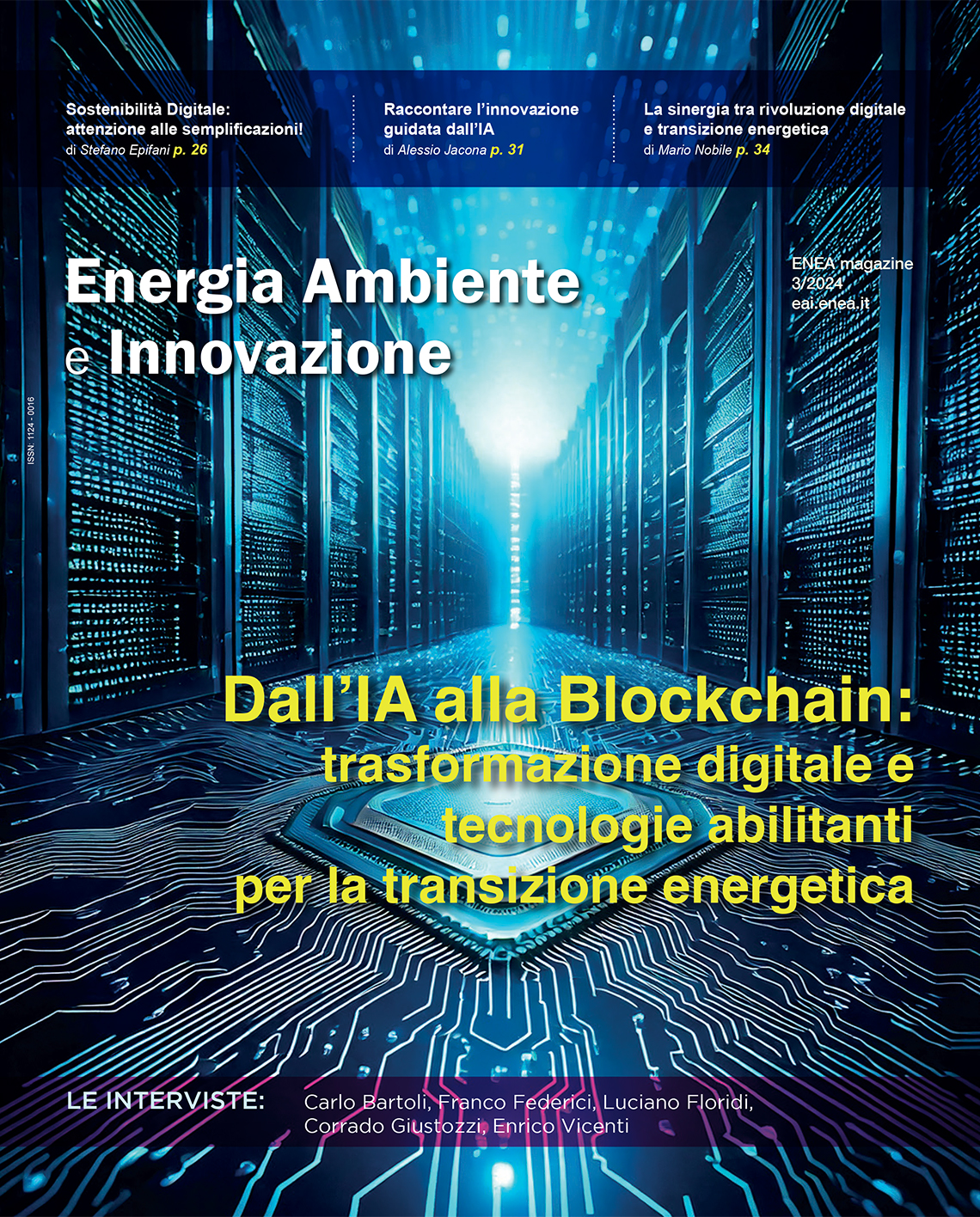
Water resources across Europe: confronting water stress
di Nihat Zal
DOI 10.12910/EAI2023-005
Water stress was not perceived as a Europe-wide problem until the early 2000s, with a focus on southern Europe because of the regional climatic conditions. However, the frequency of water stress is increasing, and the affected area is expanding towards central and western Europe. Today, on average, water stress affects every year around 20 % of the European territory and 30 % of the total population.

Nihat Zal
Water resources, water scarcity and droughts expert, European Environment Agency
Water stress occurs when there is insufficient water available to meet the demands of the environment and our society and economy, in terms of quantity or quality. Water stress is a general term combining drought, scarcity, water quality and water accessibility. Drought reflects the shortage of water due to short or long-term precipitation deficits. Water scarcity defines a medium-term water stress condition when the water demand for human needs exceeds the sustainable supply capacity of the na-tural system in river basins.
Water stress was not perceived as a Europe-wide problem until the early 2000s, with a focus on southern Europe because of the regional climatic conditions. However, the frequency of water stress is increasing, and the affected area is expanding towards central and western Europe. Today, on average, water stress affects every year around 20% of the European territory and 30% of the total population.
Policy context
The EU Water Framework Directive (WFD) establishes a legal framework at the EU level aiming, inter alia, to achieve sustainable water use based on the water resources available in the long term. The WFD supports integrated water management and sets out provisions to improve the efficiency of water use.
To respond to the increasing occurrence, frequency and impacts of water stress the EU also adopted a communication on water scarcity and drought in an effort to bring more clarity to the policy priorities for addressing water stress. ‘A blueprint to safeguard Europe’s water resources’ was published in 2012, and, along with the policy provisions put forward in these two strategic documents, the EU Resource efficiency roadmap, the common agricultural policy (CAP) and the Seventh Environment Action Programme also announced a number of policy mechanisms aiming to protect and enhance European natural capital and water resources.
The implementation of those policies has contributed to some positive developments, for example a decrease in total water abstraction in Europe. Nevertheless, policies addressing water stress remain scattered, and overall progress has been slow.
Currently, some Member States develop and implement drought management plans (complementary to the river basin management plans) under the EU WFD. The implementation of the plans has taken place at variable speeds across the EU Member States and the various WFD thematic areas, and there are still gaps to be addressed in the next cycles of implementation. Despite recent measures, more time is needed for all water bodies in Europe to achieve good status, while the final deadline of 2027 is coming near.
Most recently, the European Green Deal sets ambitious targets and objectives to protect, conserve and enhance the EU’s natural capital. The new EU strategy on adaptation to climate change calls for expedited action to safeguard access to freshwater and ensure sustainable use as part of the ‘faster adaptation’ objective.
The new circular economy action plan and the Water Reuse Regulation explicitly address water stress and water scarcity, respectively, and include provisions for improving resource efficiency in the context of managing water resources. Similarly, the EU biodiversity Strategy for 2030 acknowledges the importance of natural capital to industry and agriculture and sets quantitative targets for ecosystem restoration, including restoring 25 000 km of free-flowing rivers. Furthermore it requests Member States to review water abstraction and impoundment permits and to implement ecological flows, so that they can achieve good status or potential in all water bodies by 2027.
The new European Climate Law, the sustainable finance taxonomy, the farm to fork strategy, the new CAP Pillar II and the Eighth Environment Action Programme all call for increasing resource efficiency, protecting our natural capital and improving human well-being by means of transitioning the European economy to become more sustainable by target years ranging from 2030 to 2050.
In the context of water stress, all of these policy provisions and initiatives require strong coordination and collaboration during the implementation phase across sectors and ecosystems. So far, major obstructions to more effective policy implementation are the institutional frameworks and capacity, which are not adequate to promote coordinated, cross-sectoral action and measure progress.
Renewable freshwater resources under a changing climate
Climate change is a major factor influencing the availability of renewable freshwater resources. The last few decades have seen some of the hottest and driest years on record, and the annual average temperature in Europe has already increased to 1.6-1.7°C above the pre-industrial level.
The temperature rise increases potential and actual evapotranspiration, causes more frequent extreme droughts, intensifies heavy precipitation, attenuates snowpack build-up and triggers early snow melting. These effects have led to a decrease in annual precipitation in parts of southern Europe and decreasing river discharges, leading to increasing water stress.
In contrast, in north-eastern and northern Europe, precipitation and the intensity of heavy precipitation in winter and summer is increasing, leading to increasing annual river discharges in those regions. This trend is expected to continue in the coming decades.
A decrease in the depth of the snowpack in the Alps and Carpathian Mountains and earlier snow melt at lower altitudes in the Alps can already be observed, while recent summer droughts have struck areas reaching as far north as the Arctic circle.
Freshwater use under socio-economic change
The population of European urban centres continues to increase, while the population in rural areas decreases. This leads to the development of more peri-urban land to meet additional needs for residences and workplaces.
Moreover, tourism in Europe has reached record levels over the last decade and this has resulted in the rapid conversion of land for the development of touristic facilities and the supporting transport infrastructure. Urban sprawl accelerates in coastal areas, which are also vulnerable to future sea level rise. The expansion in impervious areas and land sealing increases the risks of urban floods and drains away water that could otherwise recharge local aquifers.
On average, the major water consumers are agriculture (58%), electricity production (18%), households and services (13%) and mining, quarrying, construction and manufacturing (11%) in Europe. Water consumption in Europe shows a trend towards decoupling from economic growth. Water consumption in Europe was 16% lower in 2017 than in 1995, while production by economic sectors grew by 20% in terms of net value added. Nevertheless, the issue of water stress conti-
nues to escalate causing increasing competition for water among economic sectors.
The observed decreasing trend in water abstraction volumes has so far not translated into an improvement in the quantitative status of water bodies. This may be partly due to the slow process of recovery and also to climate change, which can offset gains and aggravate local pressures.
In 2015, 58% of river water bodies had not achieved good ecological status, for which water abstraction was reported as one of the main pressures in 8% of river water bodies not achieving good ecological status.
Despite some progress, many challenges remain and need further action. There is significant potential to save water across all economic sectors, but large investments are needed to unlock it. Enforcement of ecological flows has improved, yet there is still a long way to go to achieve full implementation of the WFD requirements.
Leakages in the conveyance systems are still more than 25% of the total water supply in many eastern and southern European countries. Unauthorised abstractions are persistent in some Member States. Furthermore, attention to an enforcement of water legislation is needed to avoid the rebound effects of the implementation of these water-saving measures: a situation in which efficiency gains result in less than a proportional decrease or even in an increase in net resource consumption.
While local water resources are getting more stressed or depleted, urbanisation increases demand for water, which is often met by implementing storage and water transfer projects. Such projects have significant impacts on hydromorphology.
Promising approaches and measures
The increased seasonal variation in water demand for key socio-economic activities is at odds with the increased seasonal variation in water supply. Moreover, climate change forces Member States to explore additional measures to ensure their water supplies such as desalination, water reuse, or rainwater harvesting. In this context, it is worth mentioning the new EU Water Reuse Regulation, which sets minimum quality requirements for water reuse in agricultural irrigation. The EU is dedicated to innovation as a means to tackle the water scarcity challenges identified such as monitoring of the climate, data management, socio-environmental modelling, improvements in hydrological and drought forecasting, increasing technical water efficiency, tools for controlling water demand and better technologies for enabling and promoting alternative water sources.
Adopting separate policy goals and management practices for each of these systems can create trade-offs. Integrated management responses can generate compromise solutions that deliver working results for sustainable management of both resources. Furthermore, win-win synergies can be explored to reap the benefits from the use of more than one resource: for example, water reuse can reduce the need for groundwater abstraction from overexploited aquifers, as well as the need for fertilisation because of the nutrient content of reclaimed water; the increased energy needed for reclaiming water can be offset by the reduction in energy needed for pumping groundwater and for producing and applying fertilisers, etc.
Nature-based solutions need to be further explored and implemented. While the number of options dedicated to water stress appears limited, the associated approach and stakeholder involvement offer a way forward for integrative solutions to complex problems.
Need for integrated policy responses
Mainstreaming water considerations into other environmental and sectoral policies and finding synergies across them are key to enabling sustainable water management and reducing society’s exposure and vulnerability to water stress. One of the key factors contributing to the effectiveness of the EU water directives in progressing towards their objectives is the (binding) cross-references to the WFD’s objectives in other EU policies. The new CAP programming cycle for 2021-2027 provides a fresh opportunity to integrate more ambitious environmental safeguards that acknowledge local water resource limitations and scarcity situations.
The new farm to fork strategy illustrates how the European Green Deal aims to promote a transition to more sustainable food systems by incorporating a systemic approach. The European Green Deal and the new EU strategy on adaptation to climate change represent fresh opportunities to tackle this problem, by integrating water stress and drought policy objectives into other policy areas, increasing coherence and speeding up implementation.
* This article is based on the report EEA, 2021. Water resources across Europe -confronting water stress: an updated assessment, No 12/2021. Luxembourg. ISBN 978-92-9480-391-7

